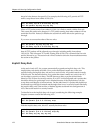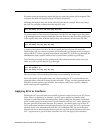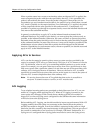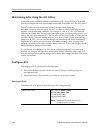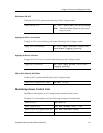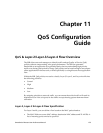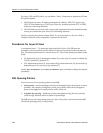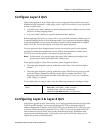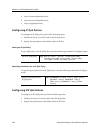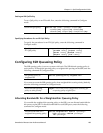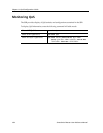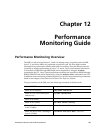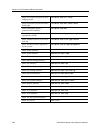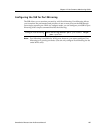
Chapter 11: QoS Configuration Guide
180 SmartSwitch Router User Reference Manual
For Layer-3 (IP and IPX) traffic, you can define “flows”, blueprints or templates of IP and
IPX packet headers.
• The IP fields are source IP address, destination IP address, UDP/TCP source port,
UDP/TCP destination port, TOS (Type of Service), transport protocol (TCP or UDP),
and a list of incoming interfaces
• The IPX fields are source network, source node, destination network, destination node,
source port, destination port, and a list of incoming interfaces
The flows specify the contents of these fields. If you do not enter a value for a field, a
wildcard value (all values acceptable) is assumed for the field.
Precedence for Layer-3 Flows
A precedence from 1 - 7 is associated with each field in a flow. The SSR uses the
precedence value associated with the fields to break ties if packets match more than one
flow. The highest precedence is 1 and the lowest is 7. Here is the default precedence of the
fields:
• IP - destination port (1), destination address (2), source port (3), source IP address (4),
TOS (5), interface (6), protocol (7)
• IPX - destination network (1), source network (2), destination node (3), source node (4),
destination port (5), source port (6), interface (7)
Use the
qos precedence ip
and
qos precedence ipx
commands to change the default
precedence.
SSR Queuing Policies
You can use one of two queuing policies on the SSR:
• strict priority – assures the higher priorities of throughput but at the expense of lower
priorities. For example, during heavy loads, low-priority traffic can be dropped to
preserve throughput of control-priority traffic, and so on.
• weighted fair queuing – distributes priority throughput among the four priorities
(control, high, medium, and low) based on percentages.
The SSR can use only one queuing policy at a time. The policy is used on the entire SSR.
The default queuing policy is strict priority.



